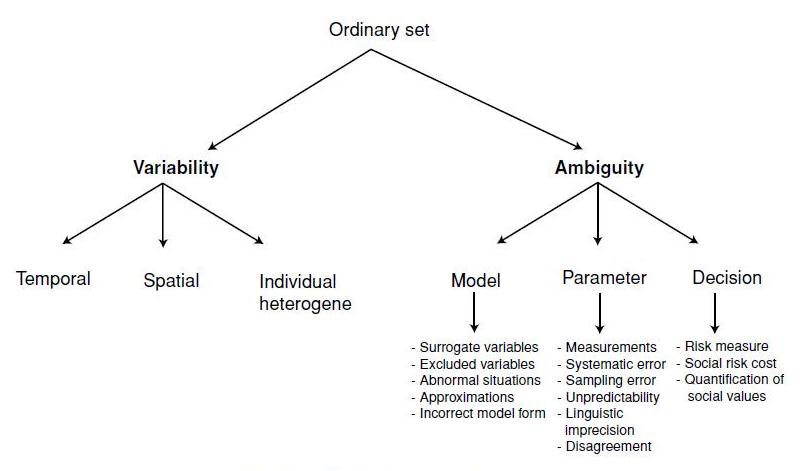By: Slobodan P. Simonovic
Reported by: Tarinee Thongcharoen (M1)
Part 2 / Systems analysis for integrated management of disasters: Chapter 4 / Introduction to methods and tools for a Systems Approach to Management of Disaster
Summary
Integrated disaster management is an iterative process of decision making regarding prevention of, response to, and recovery from, a disaster. It relies on the application of a systems approach to formulating disaster management problems, and the use of systems analysis in finding their solutions. Simulation models describe how a system operates, and are used to predict what changes will result from a specific course of action in order to predict the response of a system under a particular set of conditions. Simulation is a problem solving technique. It contains three phases: development of a model of the system, operation and observation and interpretation of the resulting outputs. Simulation does not directly produce the answer to a given problem. Simulation includes a wide variety of procedures. The major components of a simulation model are:
- Inputs: quantities that drive the model.
- Physical relationships: mathematical expressions of the relationships among the physical variables of the system being modeled
- Nonphysical relationships: those that define economic variables, political conflicts public awareness, and so on.
- Operation rules: the rules that govern operational control.
- Outputs: the final product of operations on inputs by the physical and nonphysical relations in accordance with operating rules.
The most restrictive factor in the use of simulation tools is that there are often a large number of feasible solutions to investigate. Even when combined with efficient techniques for selecting the values of each variable, quite substantial computational effort may lead to a solution that is still far from the best possible. The author introduced the system dynamics simulation as an academic discipline. A system is define as a collection of elements that continually interacts over time to form a unified whole. The underlying pattern of interactions between the elements of a system is called the structure of the system. The term dynamics refers to change over time. System dynamics is a methodology used to understand how systems change over time. The major steps that are carried out in the development of a system dynamics simulation model include: understanding the system and its boundaries, identifying the key variables, describing the processes that affect variables through mathematical relationships, mapping the structure of the model, and simulating the model for understanding its behavior. Problems of disaster management include multiple actors, multiple perspectives, conflicting interests, important tangibles, and many uncertainties. Systems dynamics simulation is a tool that can take advantage of the inherent structure of disaster problems. Use of comprehensive simulation models, preferably of interdisciplinary nature, is suggested to capture some aspects of natural phenomena and their interaction with people and human-built environment.
Systems approach offers numerous optimization tools that can be applied to the investigation of a wide range of disaster management problems. The procedure of selecting the set of decision variables that maximizes/minimizes the objective function, subject to the systems constraints, is called the optimization procedure. The objective is usually to find the best possible allocation of resources (human, material, financial etc.) within a given time period in complex disaster management systems. For most practical disaster management applications, the nonlinearity of the objective function and constraints means that many modification have been used to convert nonlinear problems for the use of Linear Programming solvers. Another type of analysis that the author introduced is multiobjective analysis. The focus of multiobjective analysis in practice is to sort out the mass of clearly dominated solutions, rather than determine the single best one. The result is the identification of a small subset of feasible solutions that is worthy of further consideration. This result is known as the set of nondominated solutions. This analysis will be further discussed in other chapter.
Integrated disaster management includes measures for before (prevention, preparedness, risk transfer), during (humanitarian aid, rehabilitation of the basic infrastructure, damage assessment), and after disaster (disaster response and reconstruction). The components of the disaster risk management are risk analysis, prevention, and preparedness. Risk analysis consists of hazard analysis and vulnerability analysis, together with analysis of protective capabilities. Disaster prevention includes those activities that prevent or reduce the negative effects of extreme natural events, primarily in the medium to long term. Preparedness for disasters is intended to avoid or reduce loss of life and damage to property if an extreme natural event occurs. Uncertainty is a lack of certainty. It has important implications for what can be achieved by integrated disaster management. Uncertainty is in part about variability in relation to the physical characteristics of the problem under consideration. But uncertainty is also about ambiguity. The main sources of uncertainty because of a lack of knowledge are depicted in Figure 4.1. The author introduced 3 tools that are widely accepted and practiced in integrated disaster management
- Probabilistic approach
- A fuzzy set approach
- Decision support systems (DSS)

Figure 4.1 Sources of uncertainty.
Reporter’s Own Thoughts
This chapter is an overview to chapter 5,6 and 7 which they will future discussed about the simulation, optimization and multiobjective analysis. This chapter also explain what is disaster risk management and what we are the important implications for what can be achieved by integrated disaster management.